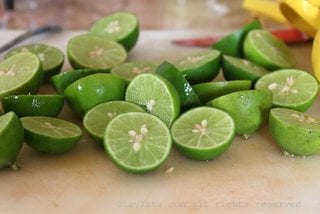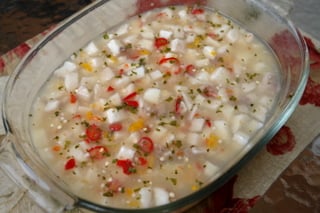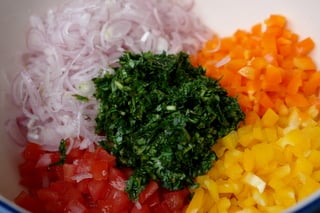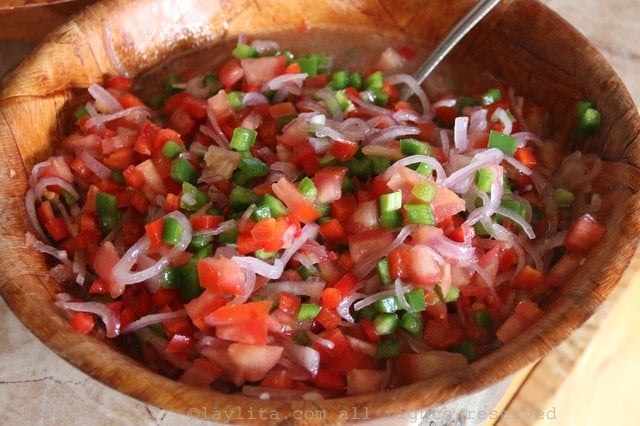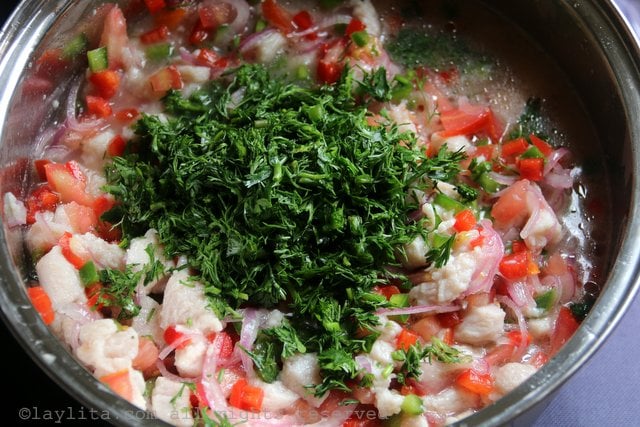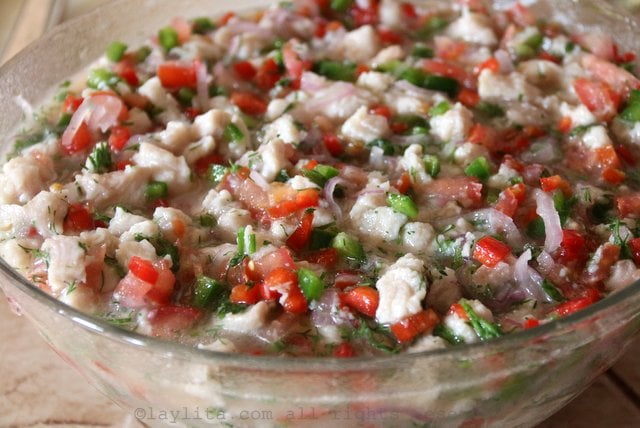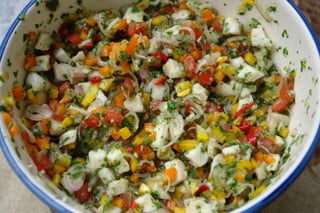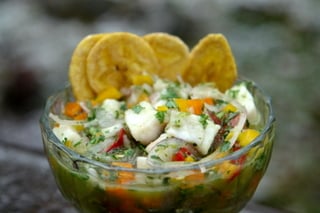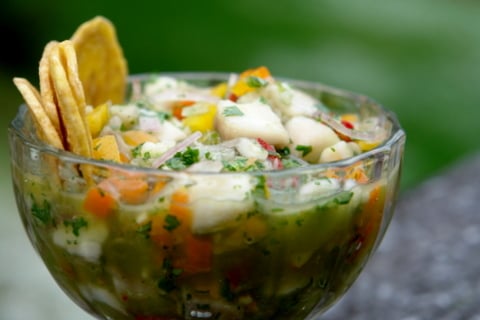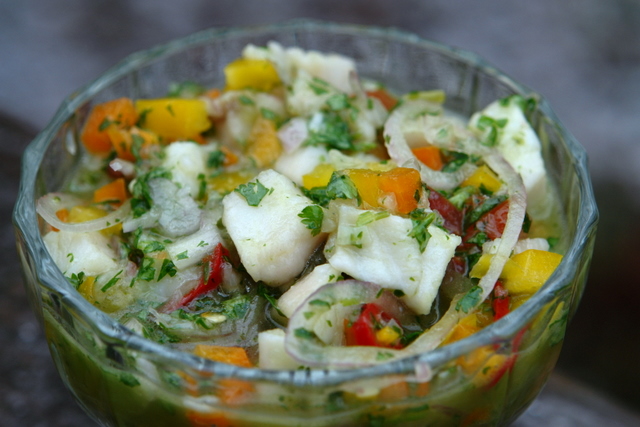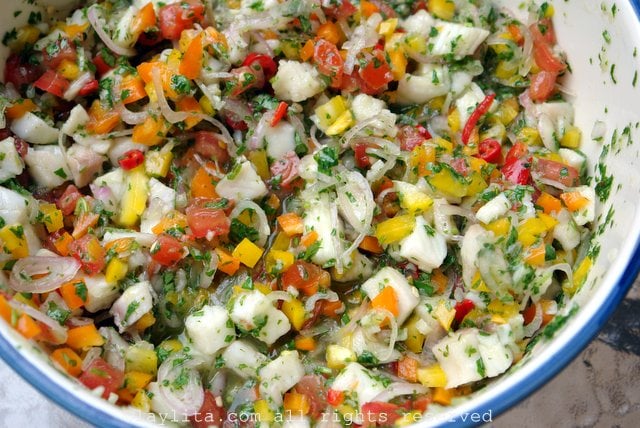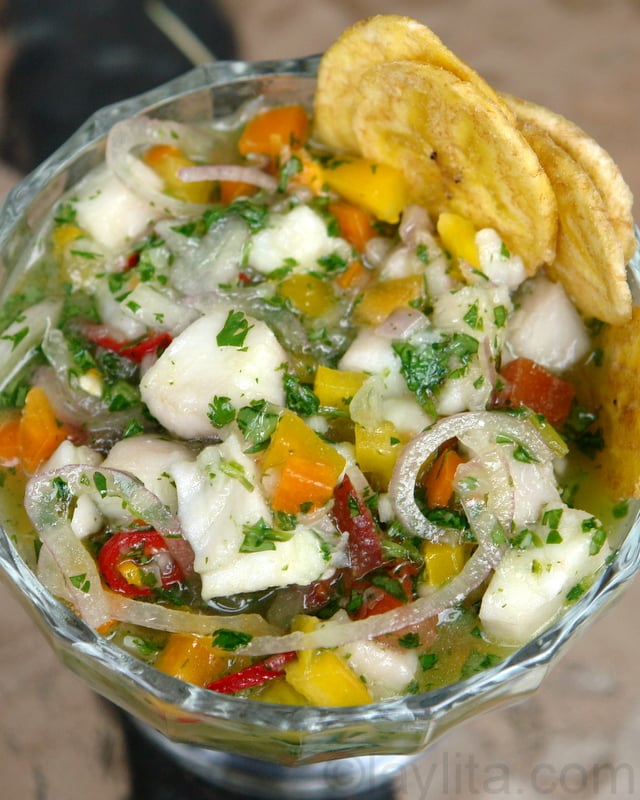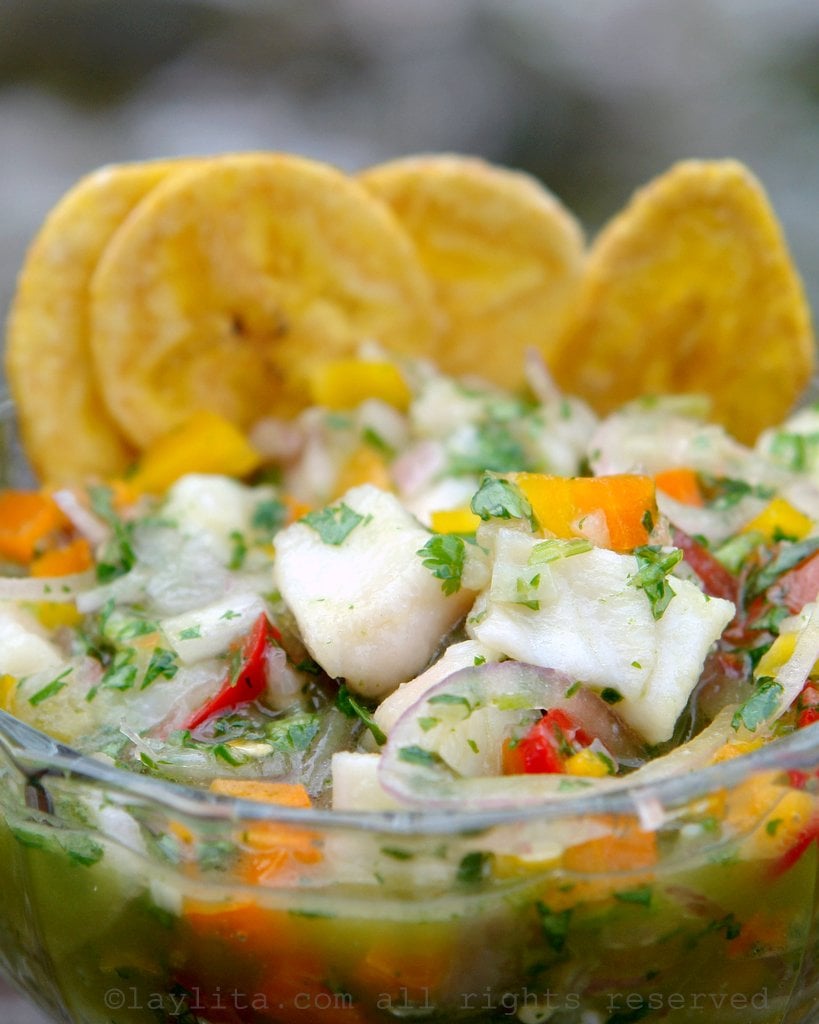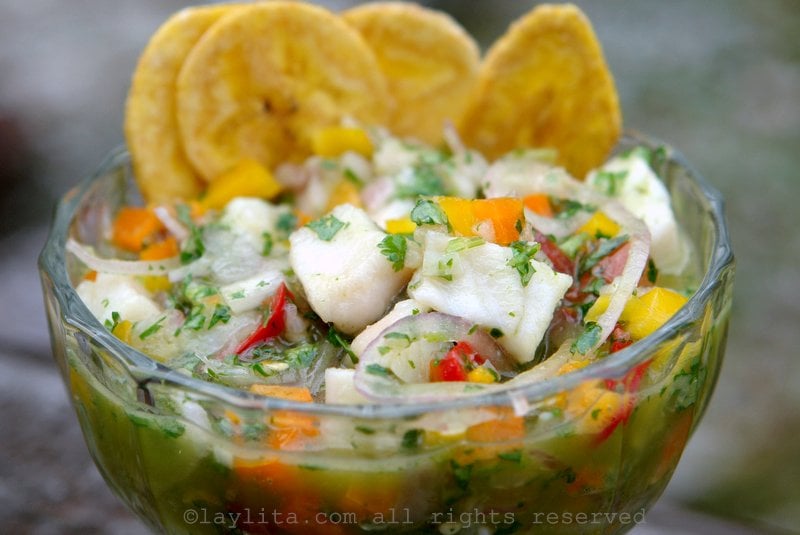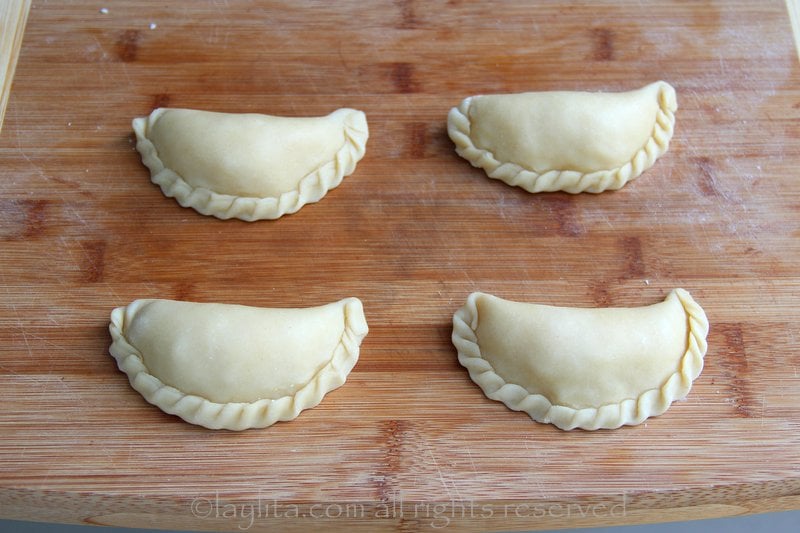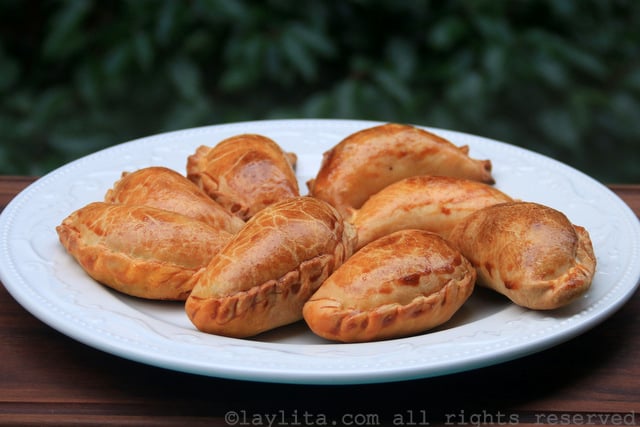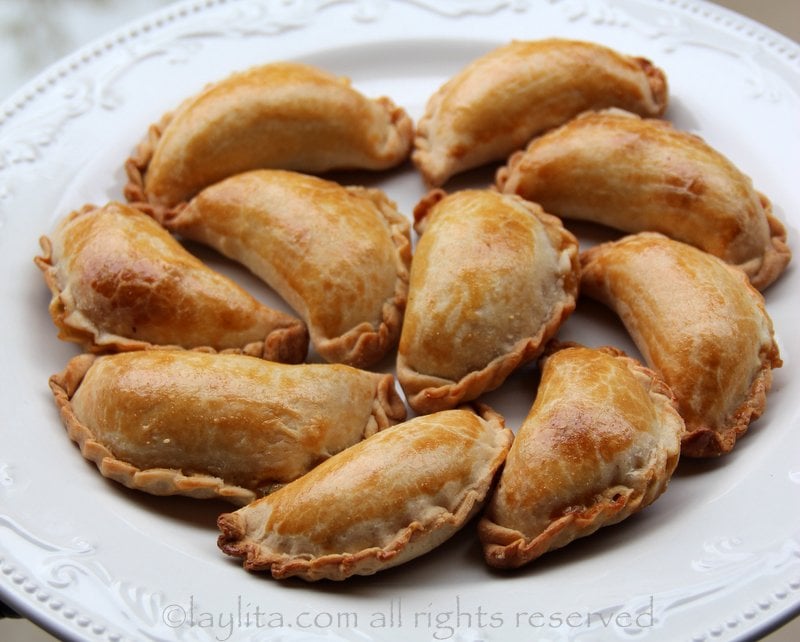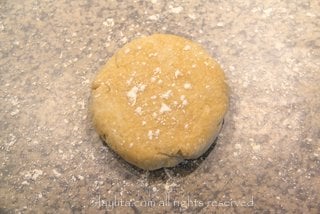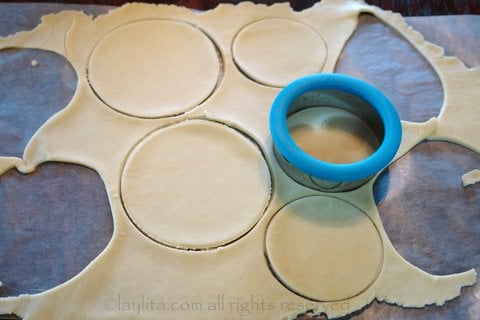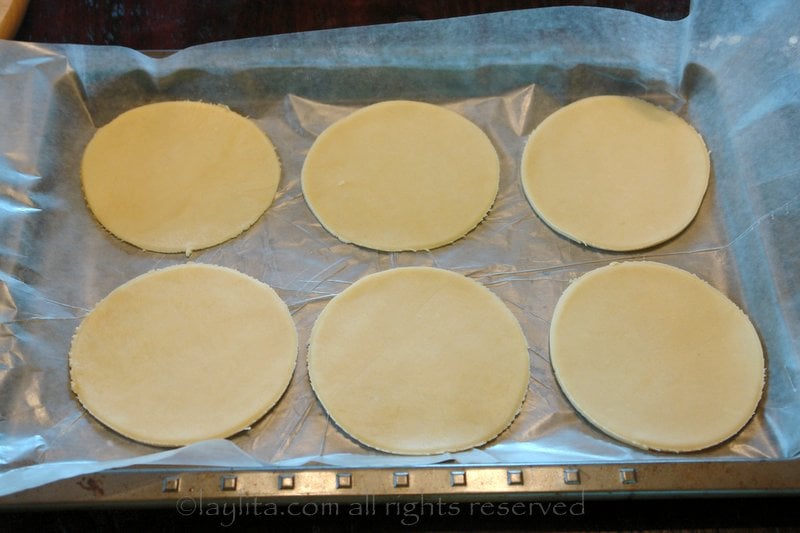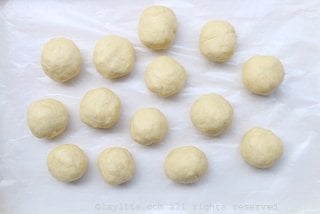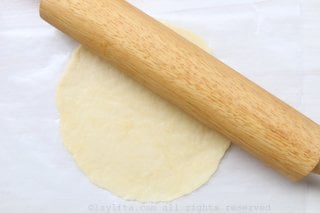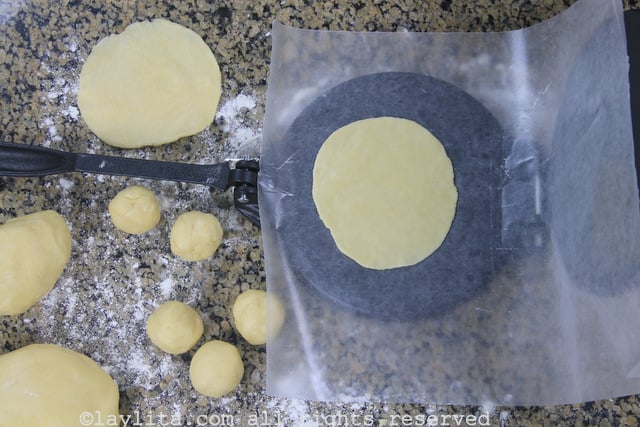Ramon’s fish ceviche {Ceviche de pescado}
Ramon’s fish ceviche {Ceviche de pescado}
This is my brother Ramon’s fish ceviche recipe, aka ceviche de pescado. We make it with fresh fish “cooked” in lime juice with hot peppers and garlic, and then mixed with lime marinated red onions (or shallots), tomatoes, bell peppers, and cilantro. I used to tell Ramon that he could visit us whenever he wanted as long as he made this ceviche for us. Not only is it so good and refreshing, but he also does all the work (cutting the fish, dicing/slicing the vegetables, and squeezing all those limes is hard work). These days when we visit him in Ecuador, he’s still kind enough to prepare it for us.
Ramon's fish ceviche {Ceviche de pescado}
My brother Ramon’s fish ceviche recipe (ceviche de pescado), made with fish “cooked” in lime juice with hot peppers and garlic, and then mixed with red onions (or shallots), tomatoes, bell peppers, and cilantro.
Ingredients
- 2 pounds of white fish fillets (corvina, halibut, sea bass, tilapia, mahi mahi, snapper), cut into small square pieces
- 2-3 hot peppers, can use Ecuadorian style aji peppers, red chilies, or serranos, sliced
- 2-4 garlic cloves, whole but gently crushed (optional)
- 2-3 small red onions, use Ecuadorian style cebolla paiteña or replace with 4-5 large shallots, peeled and finely sliced
- 4 tomatoes, diced
- 2 bell peppers, any color, diced
- ~20 small to medium sized limes, separated into about 10 limes to cook the fish and 10 limes for the onion and tomato marinade
- 1 bunch of cilantro, chopped as finely as possible
- 2-3 tablespoon of oil (avocado oil, sunflower oil, etc)
- Salt to taste
- Chifles or thin plantain chips
- Patacones or tostones
- Tostado style corn nuts or popcorn
- Aji sauce or diced hot peppers for those who want to add extra spice
Fish ceviche sides or toppings:
Instructions
- Place the diced raw fish in a large bowl or dish with the sliced hot peppers, garlic cloves, a tablespoon of chopped cilantro, 1-2 teaspoons of salt, and cover it with lime juice from about 10 limes, the fish should be completely covered or almost completely covered by the lime juice.
- Cover the bowl with plastic wrap and refrigerate it for about 3-4 hours.
- Place the sliced onions or shallots in a bowl, sprinkle them with a few teaspoons of salt and add warm water (enough to cover the onions), let rest for about 10 minutes, drain and rinse well with cold water.
- Combine the rinsed onions with the diced tomatoes and diced bell peppers. Add the juice from about 5 limes and some salt. Let this mix marinate for at least 10 minutes, it can also be prepared ahead of time and refrigerated until ready to mix with the fish.
- Once the fish is “cooked” in the lime juice, it should be completely white, remove the sliced hot peppers and garlic cloves. Based on your preference, and the acidity level, you can keep all the lime juice where the fish cooked in, or just some of it. You can strain the liquid to remove any pieces of hot peppers (or seeds) or garlic.
- Add the marinated onion or shallot, tomato, and bell pepper mix to the fish. Add the chopped cilantro, oil, salt and additional lime juice to taste. You can serve immediately or let it rest for another 20-30 minutes before serving.
- Serve with chifles, patacones, popcorn or corn nuts as well as with some good hot sauce or aji.
In Ecuador we have a small red onion variety – called cebolla paiteña – that is spicier and stronger than the red onions that are common in the US and Europe. When Ramon started preparing ceviche in the US he found that shallots were more similar to the Ecuadorian cebolla paiteña and used them for this ceviche. I find that slicing shallots is a pain, so depending on the amount of time (and patience) that I have, I sometimes will use regular red onions. Though, I do try to buy smaller red onions when I make ceviche and onion curtido.
Ceviche is one of those mouthwatering dishes that is perfect for a warm day or when you want to reminisce about those relaxing days spent at the beach. The younger me would add that ceviche is also a great hangover cure. You can make it with many different types of seafood and non-seafood ingredients. But when most people think of ceviche, it’s usually the fish variation, especially since ceviche made with fish is the one where the lime juice “cooks” the fish. I use quotes because the fish might look like it’s cooked, but it does not cook to the same extent as when you cook it over a heat source. This is why there are warnings and if you have any condition that prevents you from eating raw fish or sushi, then the same probably applies to most variations of fish ceviche.
Now for other types of ceviche, like shrimp or octopus, at least in Ecuador, the seafood is actually cooked with regular heat and then marinated with the lime juice and vegetables. It essentially depends on the seafood, the more delicate and the fresher seafood is more likely it is to be cooked with lime juice. Other ceviches containing raw seafood include oysters, scallops, and the mouthwatering ceviche de concha, a ceviche made from fresh black clams, which you can usually prepare fresh and serve immediately. You can complement this ceviche with chifles (thin green plantain chips) or patacones/tostones (thick green plantain chips), tostado or cancha style corn nuts, popcorn, and hot sauce for an extra kick.
Step by step photos for how to make fish ceviche:
